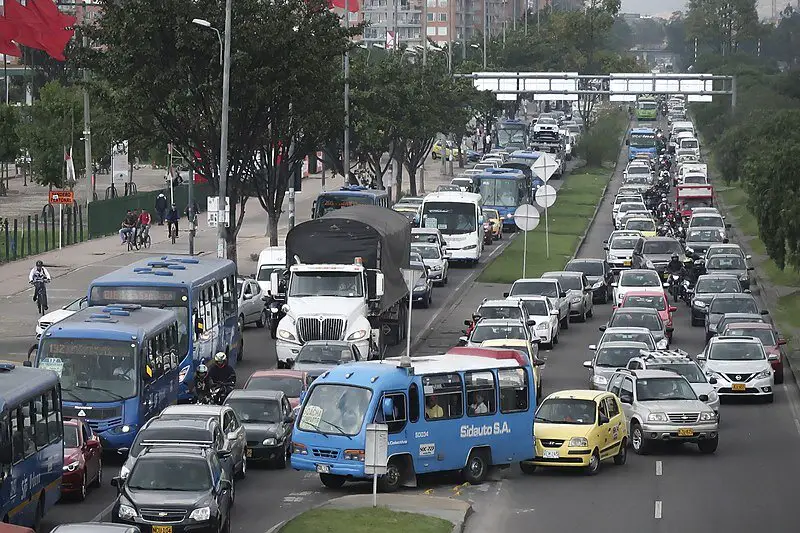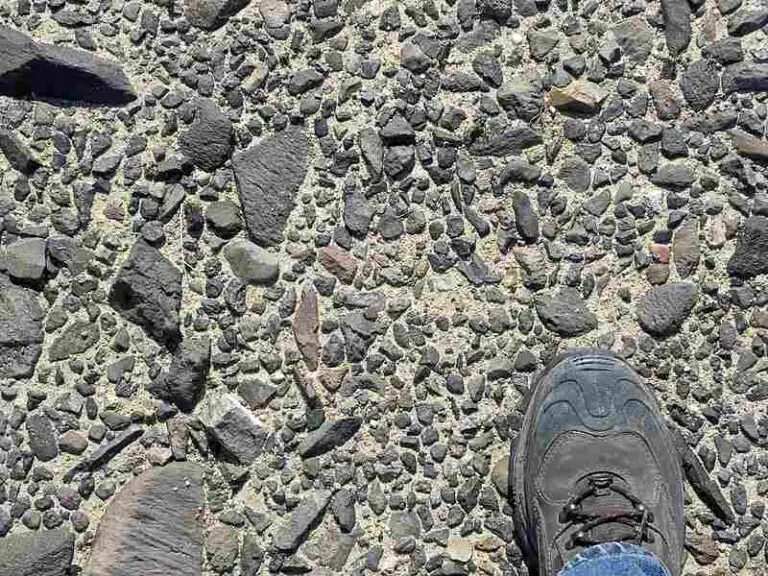5 Causes of Noise Pollution and Characteristics Explained
Causes of noise pollution are; high-volume automobile traffic, industrial activities, unregulated use of electrical sound-amplifiers (like speakers), volcanic eruptions, and thunderstorms. They can be broadly classified into manmade and natural categories.
This article discusses the causes of noise pollution and their individual characteristics, as follows;
-Manmade Causes of Noise Pollution
-Natural Causes of Noise Pollution
-Manmade Causes of Noise Pollution
Manmade causes of noise pollution are; high-volume automobile traffic, industrial activities, and unregulated use of sound-amplifiers like speakers.
1). High-Volume Automobile Traffic (as one of the Causes of Noise Pollution)
A prominent cause of noise pollution on roads and their environs is automobile vehicles.
This is an important environmental issue in urban areas, where there is high-volume traffic on highways for several hours of every day.
The main sources of noise from automobiles are movable parts and combustion processes, which are highly-concentrated around the engine area, and extends to the external and internal accessories of the vehicle.
A classic example of the mechanism of noise pollution in automobiles is high-pitched, irregular sounds of fluid oscillation in engine valves.
Road traffic noise affects multiple aspects of the environment, including regional species richness and biological productivity, as well as human work-efficiency and economic growth [3].
Local species like birds and reptiles can be forced to migrate from their habitat or to develop adaptive behaviors that may reduce their survival rate, if they are constantly disturbed by sound waves from busy highways.
The same acoustic disturbance can reduce the output of workers within the area, whose concentration as well as health, could be affected negatively.
High-volume automobile traffic is in fact a recurrent topic with respect to the environmental impacts of urbanization and industrialization.
Asides noise, other types of environmental degradation are associated with noise pollution, including air pollution [6]; where toxic byproducts of fuel combustion in vehicles are known to reduce air quality while facilitating the greenhouse effect and climate change.
Such negative environmental impacts have strengthened the argument for technological reform in the transport sector, including energy transition to cleaner resources, and the adoption of electric vehicles as a more-sustainable automobile technology.
Closely related to land-based automobile disturbance is noise from aircrafts, which can have a similar intensity and effect in the environs of airports.
The severity of noise pollution by automobile traffic depends on factors like road geometry, traffic volume, vehicular speed, and highway activities like honking [7].
Noise pollution by vehicles can be controlled by modifying automobile tires and road surfaces, regulating speed and lane-usage, constructing noise barriers at strategic points, and restricting the use of heavy-duty vehicles to specified conditions.

2). Industrial Activities
Industrial noise; also known as occupational noise, is any sound disturbance generated by equipment and processes that are used in an industrial setting.
Industries cause noise pollution through the operation of heavy tools and machinery. These tools and machines cause noise pollution by the exertion of force and the transfer of energy in the course of their usage; which may occur in the form of friction or collision between mechanical components.
Examples of industrial machinery that are known to produce significant noise are; turbines, drills, saws, generators, rotating belts, motors and pumps. As can be observed, the list includes small components and entire systems (that comprise of several of such components).
The effects of industrial noise pollution can be very hazardous, including; loss of productivity, tinnitus, psychological stress, cardiovascular ailment and hearing-loss [1].
Noise pollution is a challenge to the industrial sector because it impacts negatively on productivity. It is also associated with excessive thermal energy production, which can lead to wastage of such energy, and thermal pollution.
3). Unregulated Use of Electrical Sound-Amplifiers (as one of the Causes of Noise Pollution)
Electrical sound-amplifiers include all electricity-powered systems used to enhance the intensity of sound waves from a given source. The most common example of such systems is the electric speaker, which comes in a broad variety of designs and capacities.
While these devices are useful for public-address purposes, the intensity of their sound-output should be regulated to prevent excessive output that could have harmful effects on the surrounding.
Excessive sound produced by loud speakers causes auditory problems that range from temporary to permanent hearing defect. Unfortunately, the propagation of such excessive sound is not very uncommon in many parts of the world, with political, festive and religious events at the forefront of causative scenarios.
Because of the growing need for, and use of, sound-amplifying systems, it is helpful for efforts to be made to regulate their use to levels that pose minimal risk and disturbance to the environment.
-Natural Causes of Noise Pollution
Natural causes of noise pollution are; volcanic eruptions and thunderstorms.
4). Volcanic Eruptions
Volcanic eruptions are a natural cause of noise pollution, which occurs usually in the form of sudden, loud and prolonged explosions, hissing, roaring and rumbling that occur as volcanoes emit materials onto the Earth's surface and into the atmosphere.
The cause of explosions and other noises from volcanoes is pressure-release, which tends to occur alongside rock-splitting, and forceful ejection of gas, ash and rock materials.
Krakatao volcanic eruption which occurred in Indonesia on 27 August 1883 [5], is the loudest recorded eruption in history as of 2023, and involved significant Earth tremor and loss of life.
Volcanic eruptions are also hazardous for their role in air pollution, which can be traced to the release of toxic gases like sulfur oxide from volcanoes [4].

5). Thunderstorms (as one of the Causes of Noise Pollution)
Like volcanic eruptions, thunderstorms are natural events that involve the propagation of significant magnitude and intensity of sound, which can be described as noise due to its intense and disruptive nature.
Thunderstorm noise is known as thunder-clap; and it is caused by the rapid expansion and contraction of air masses as they are heated and cooled by lightning energy bolts. This means that thunder is a sonic product of lightning.
The occurrence of lighting itself is a result of the sudden release of charges accumulated in storm clouds by the interaction of wind and rain drops.
Lightning can cause air pollution on a relatively-small scale, by facilitating reactions that lead to the formation of nitrogen oxides (NOx), which can negatively impact air quality [2].
Because these phenomena are natural in their occurrence, addressing the issue of noise pollution caused by thunderstorms must be done with the aim of resolving and mitigating (the effects of), rather than preventing, sound propagation.
Effects of thunderstorms are numerous, as they are associated with other hazards like flooding and forest fire.

Conclusion
The causes of noise pollution are;
1. High-Volume Automobile Traffic
2. Industrial Activities
3. Unregulated Use of Electrical Sound-Amplifiers
4. Volcanic Eruptions
5. Thunderstorms
References
1). Li, X.; Dong, Q.; Wang, B.; Song, H.; Wang, S.; Zhu, B. (2019). "The Influence of Occupational Noise Exposure on Cardiovascular and Hearing Conditions among Industrial Workers." Sci Rep. 2019 Aug 8;9(1):11524. Available at: https://doi.org/10.1038/s41598-019-47901-2. (Accessed 8 May 2023).
2). Murray, L. T. (2016). "Lightning NO x and Impacts on Air Quality." Current Pollution Reports 2(2). Available at: https://doi.org/10.1007/s40726-016-0031-7. (Accessed 8 May 2023).
3). Pal, D.; Bhattacharya, D. (2012). "Effect of Road Traffic Noise Pollution on Human Work Efficiency in Government Offices, Private Organizations, and Commercial Business Centres in Agartala City Using Fuzzy Expert System: A Case Study." Advances in Fuzzy Systems 2012(5). Available at: https://doi.org/10.1155/2012/828593. (Accessed 8 May 2023).
4). Reikard, G. (2019). "Volcanic emissions and air pollution: Forecasts from time series models." Atmospheric Environment X 1:100001. Available at: https://doi.org/10.1016/j.aeaoa.2018.100001. (Accessed 8 May 2023).
5). Self, S. (1992). "Krakatau revisited: The course of events and interpretation of the 1883 eruption." GeoJournal 28, 109–121 (1992). Available at: https://doi.org/10.1007/BF00177223. (Accessed 9 May 2023).
6). Ukpebor, J. E.; Omagamre, E. W.; Abayode, B.; Unuigbe, C. A.; Dibie, E. N.; Ukpebor, E. E. (2021). "Impacts of improved traffic control measures on air quality and noise level in Benin City, Nigeria." Malawi Journal of Science and Technology Vol. 13 No. 2. Available at: https://www.ajol.info/index.php/mjst/article/view/218545. (Accessed 8 May 2023).
7). Vijay, R.; Sharma, A.; Chakrabarti, T.; Gupta, R. (2015). "Assessment of honking impact on traffic noise in urban traffic environment of Nagpur, India." J Environ Health Sci Eng. 2015 Feb 12;13:10. Available at: https://doi.org/10.1186/s40201-015-0164-4. (Accessed 8 May 2023).




